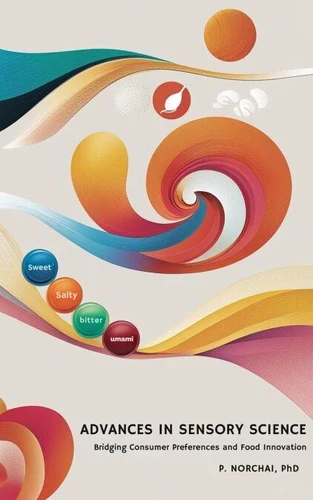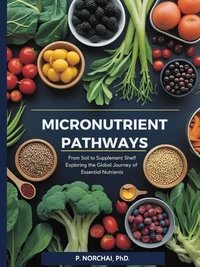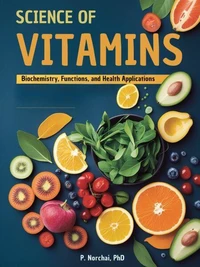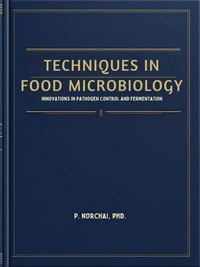ADVANCES IN SENSORY SCIENCE: Bridging Consumer Preferences and Food Innovation
Par :Formats :
Disponible dans votre compte client Decitre ou Furet du Nord dès validation de votre commande. Le format ePub est :
- Compatible avec une lecture sur My Vivlio (smartphone, tablette, ordinateur)
- Compatible avec une lecture sur liseuses Vivlio
- Pour les liseuses autres que Vivlio, vous devez utiliser le logiciel Adobe Digital Edition. Non compatible avec la lecture sur les liseuses Kindle, Remarkable et Sony
 , qui est-ce ?
, qui est-ce ?Notre partenaire de plateforme de lecture numérique où vous retrouverez l'ensemble de vos ebooks gratuitement
Pour en savoir plus sur nos ebooks, consultez notre aide en ligne ici
- FormatePub
- ISBN8231644131
- EAN9798231644131
- Date de parution15/06/2025
- Protection num.pas de protection
- Infos supplémentairesepub
- ÉditeurWalzone Press
Résumé
Advances in Sensory Science: Bridging Consumer Preferences and Food Innovation offers an in-depth, interdisciplinary exploration of how human sensory perception drives food design, consumer behavior, and product success in today's global food industry. Written for undergraduate and postgraduate students, researchers, and industry professionals, this textbook delivers a comprehensive foundation in food sensory evaluation-connecting the physiological, psychological, and technological dimensions of how people experience food.
The book is structured in three parts: Part 1: Foundations of Sensory Science provides a scientific overview of human sensory systems and introduces key testing methodologies including discrimination, descriptive, and affective (hedonic) analysis. Part 2: Consumer Behavior and Product Development explores how consumer preferences shape food innovation, with chapters on segmentation, emotional response, sensory-driven branding, packaging, shelf-life evaluation, and cross-cultural research.
Part 3: Advanced Topics and Applications delves into cutting-edge areas such as sensory AI, multisensory integration, functional foods, sensory testing in special populations, and the ethical challenges posed by emerging sensory technologies. From sensory thresholds to the role of AI in flavor profiling, from sustainability trends to product reformulation strategies, the text bridges theory and real-world application.
It includes case studies, experimental design guidance, statistical frameworks, and insight into panelist training-empowering readers to conduct high-quality sensory research and create products that align with evolving consumer demands. Whether you're a student of food science or a product developer aiming to optimize sensory performance, this book offers the critical tools and perspectives needed to succeed in a market where sensory appeal and consumer insight are more vital than ever.
The book is structured in three parts: Part 1: Foundations of Sensory Science provides a scientific overview of human sensory systems and introduces key testing methodologies including discrimination, descriptive, and affective (hedonic) analysis. Part 2: Consumer Behavior and Product Development explores how consumer preferences shape food innovation, with chapters on segmentation, emotional response, sensory-driven branding, packaging, shelf-life evaluation, and cross-cultural research.
Part 3: Advanced Topics and Applications delves into cutting-edge areas such as sensory AI, multisensory integration, functional foods, sensory testing in special populations, and the ethical challenges posed by emerging sensory technologies. From sensory thresholds to the role of AI in flavor profiling, from sustainability trends to product reformulation strategies, the text bridges theory and real-world application.
It includes case studies, experimental design guidance, statistical frameworks, and insight into panelist training-empowering readers to conduct high-quality sensory research and create products that align with evolving consumer demands. Whether you're a student of food science or a product developer aiming to optimize sensory performance, this book offers the critical tools and perspectives needed to succeed in a market where sensory appeal and consumer insight are more vital than ever.
Advances in Sensory Science: Bridging Consumer Preferences and Food Innovation offers an in-depth, interdisciplinary exploration of how human sensory perception drives food design, consumer behavior, and product success in today's global food industry. Written for undergraduate and postgraduate students, researchers, and industry professionals, this textbook delivers a comprehensive foundation in food sensory evaluation-connecting the physiological, psychological, and technological dimensions of how people experience food.
The book is structured in three parts: Part 1: Foundations of Sensory Science provides a scientific overview of human sensory systems and introduces key testing methodologies including discrimination, descriptive, and affective (hedonic) analysis. Part 2: Consumer Behavior and Product Development explores how consumer preferences shape food innovation, with chapters on segmentation, emotional response, sensory-driven branding, packaging, shelf-life evaluation, and cross-cultural research.
Part 3: Advanced Topics and Applications delves into cutting-edge areas such as sensory AI, multisensory integration, functional foods, sensory testing in special populations, and the ethical challenges posed by emerging sensory technologies. From sensory thresholds to the role of AI in flavor profiling, from sustainability trends to product reformulation strategies, the text bridges theory and real-world application.
It includes case studies, experimental design guidance, statistical frameworks, and insight into panelist training-empowering readers to conduct high-quality sensory research and create products that align with evolving consumer demands. Whether you're a student of food science or a product developer aiming to optimize sensory performance, this book offers the critical tools and perspectives needed to succeed in a market where sensory appeal and consumer insight are more vital than ever.
The book is structured in three parts: Part 1: Foundations of Sensory Science provides a scientific overview of human sensory systems and introduces key testing methodologies including discrimination, descriptive, and affective (hedonic) analysis. Part 2: Consumer Behavior and Product Development explores how consumer preferences shape food innovation, with chapters on segmentation, emotional response, sensory-driven branding, packaging, shelf-life evaluation, and cross-cultural research.
Part 3: Advanced Topics and Applications delves into cutting-edge areas such as sensory AI, multisensory integration, functional foods, sensory testing in special populations, and the ethical challenges posed by emerging sensory technologies. From sensory thresholds to the role of AI in flavor profiling, from sustainability trends to product reformulation strategies, the text bridges theory and real-world application.
It includes case studies, experimental design guidance, statistical frameworks, and insight into panelist training-empowering readers to conduct high-quality sensory research and create products that align with evolving consumer demands. Whether you're a student of food science or a product developer aiming to optimize sensory performance, this book offers the critical tools and perspectives needed to succeed in a market where sensory appeal and consumer insight are more vital than ever.

















